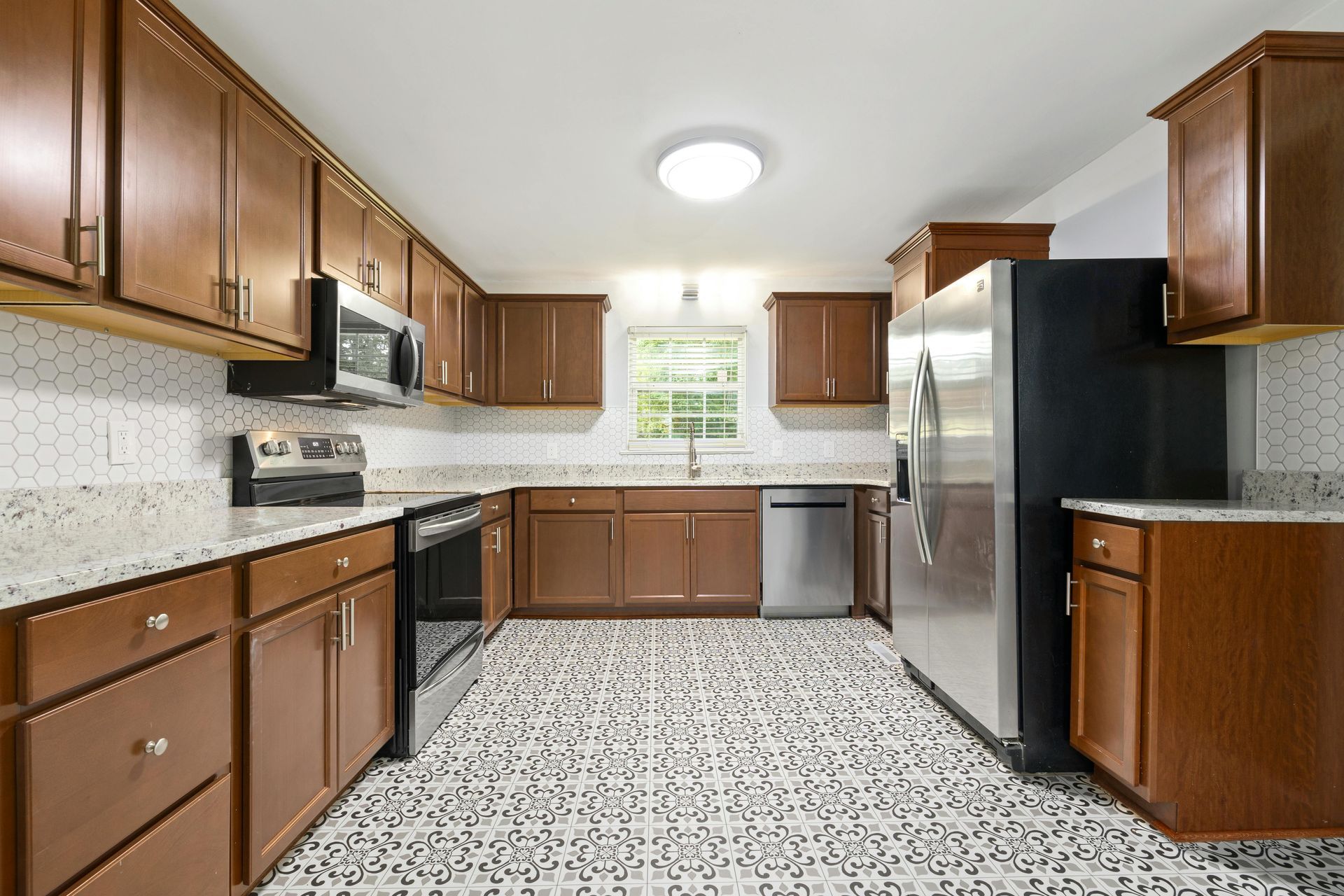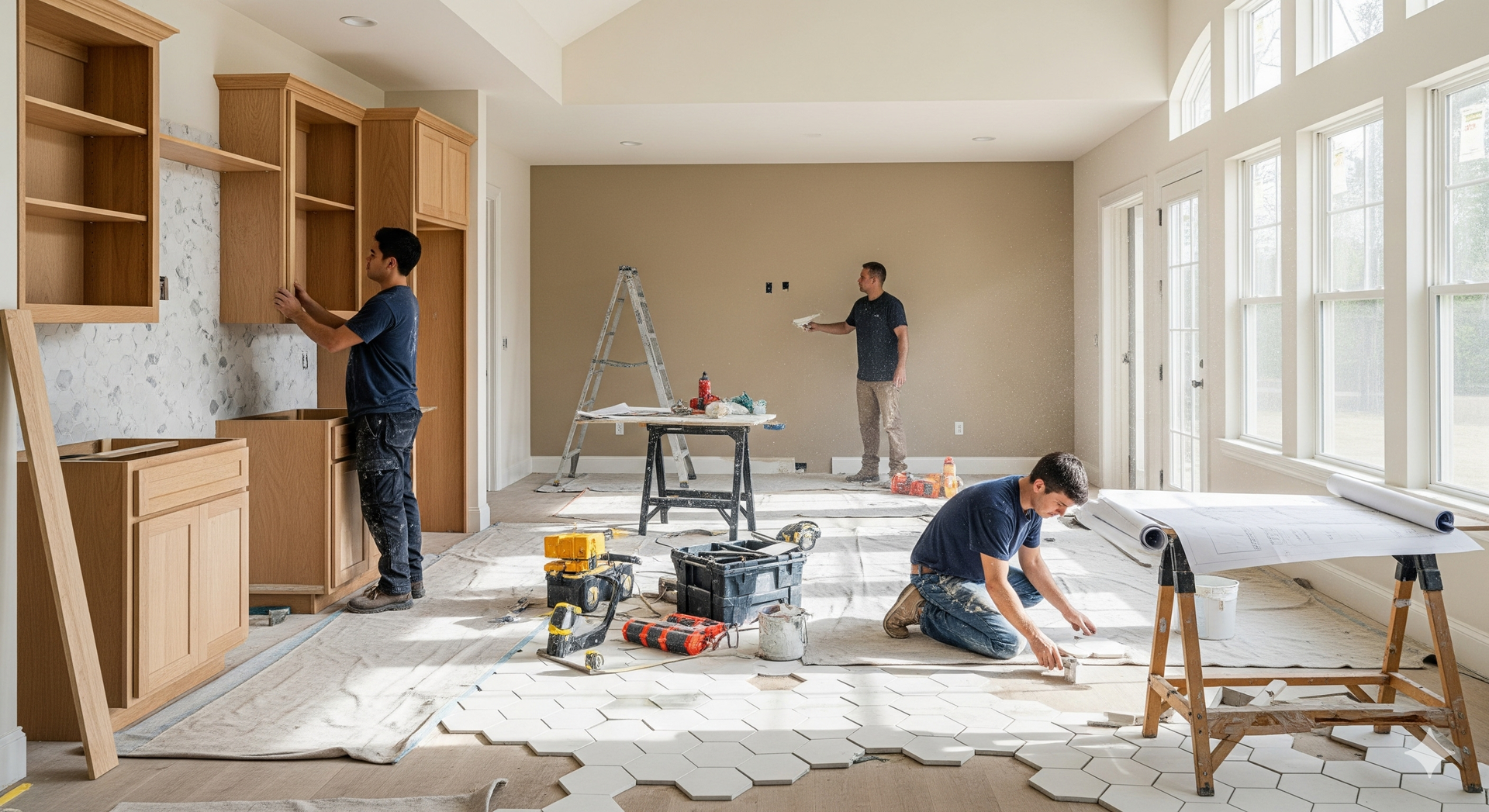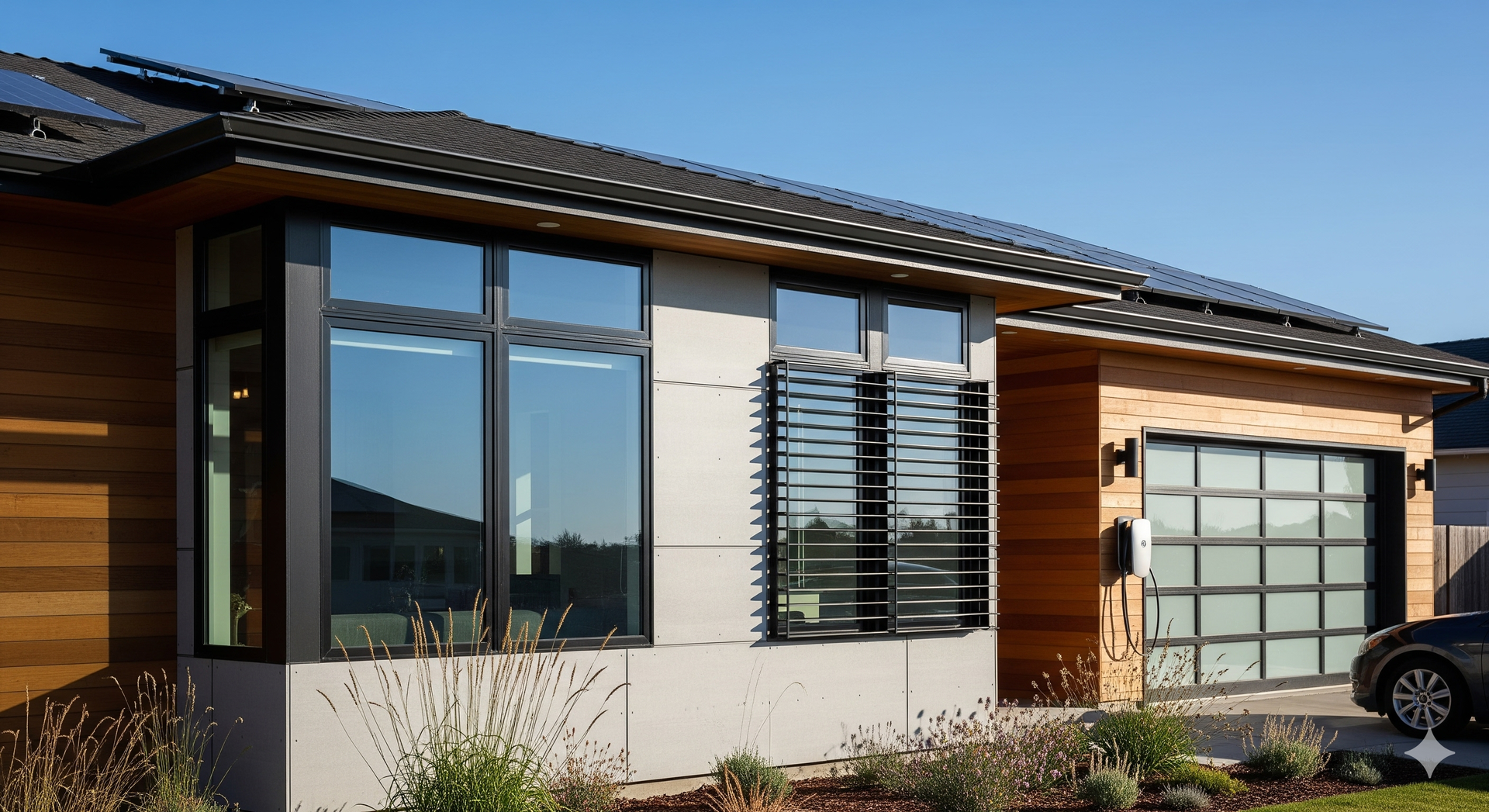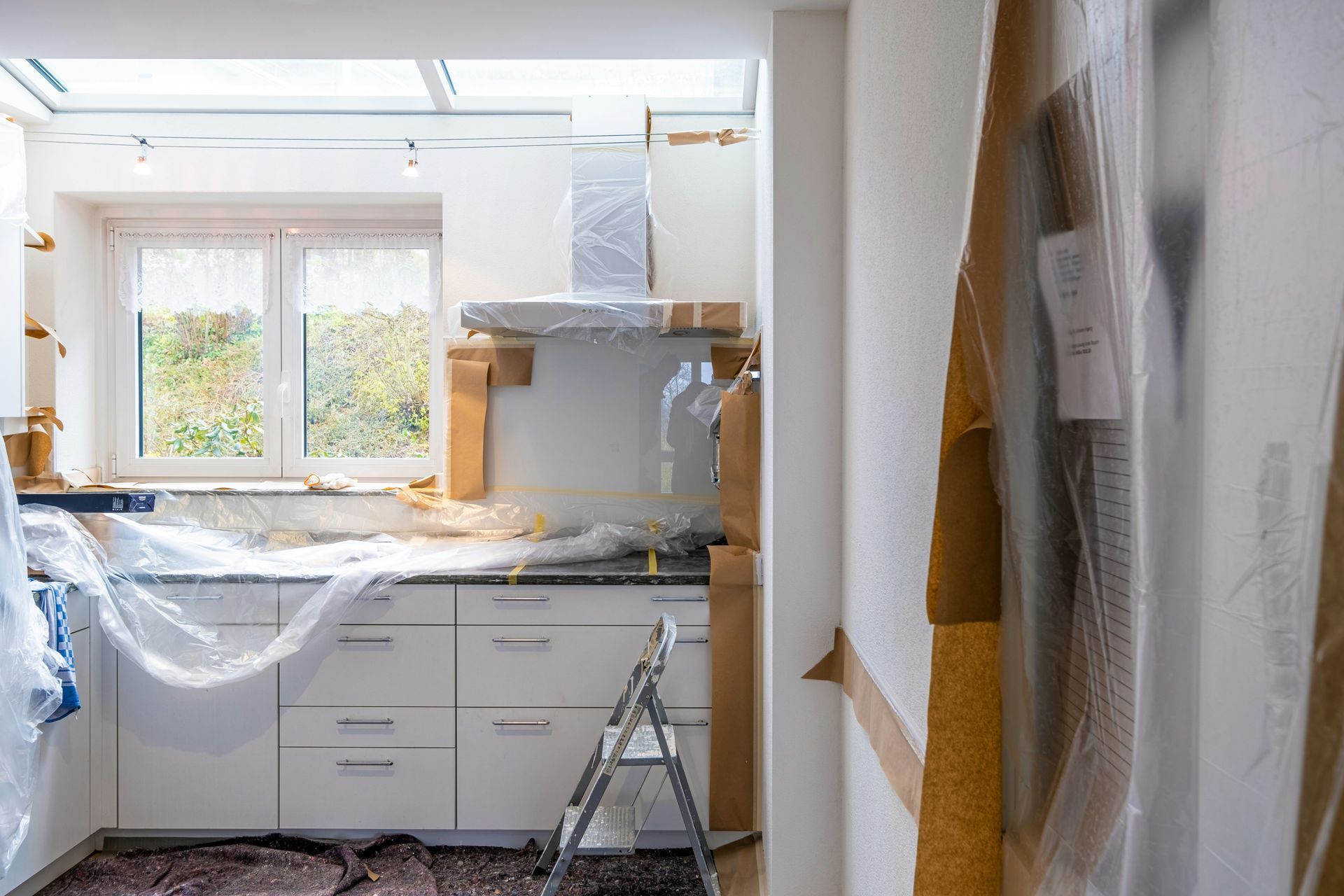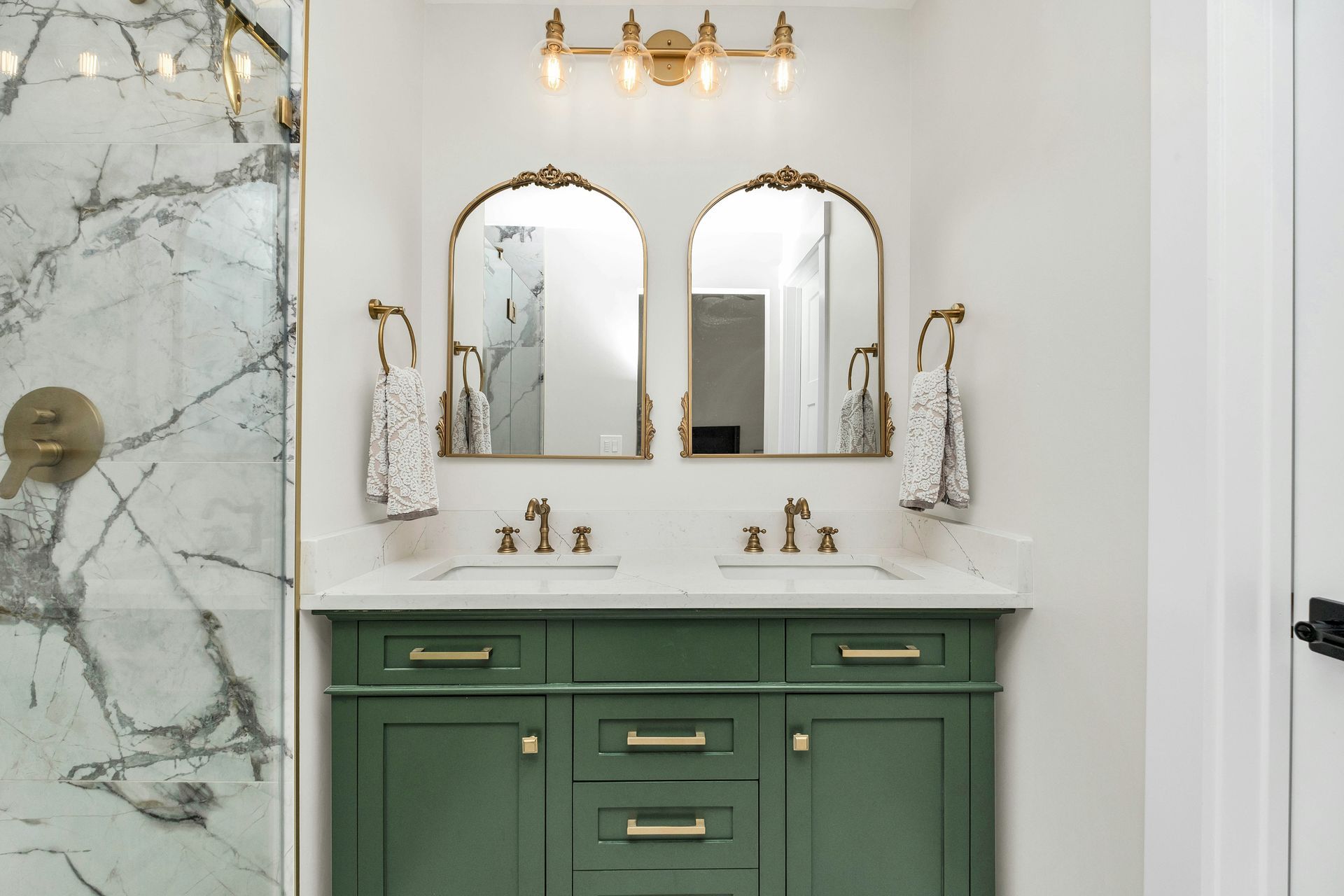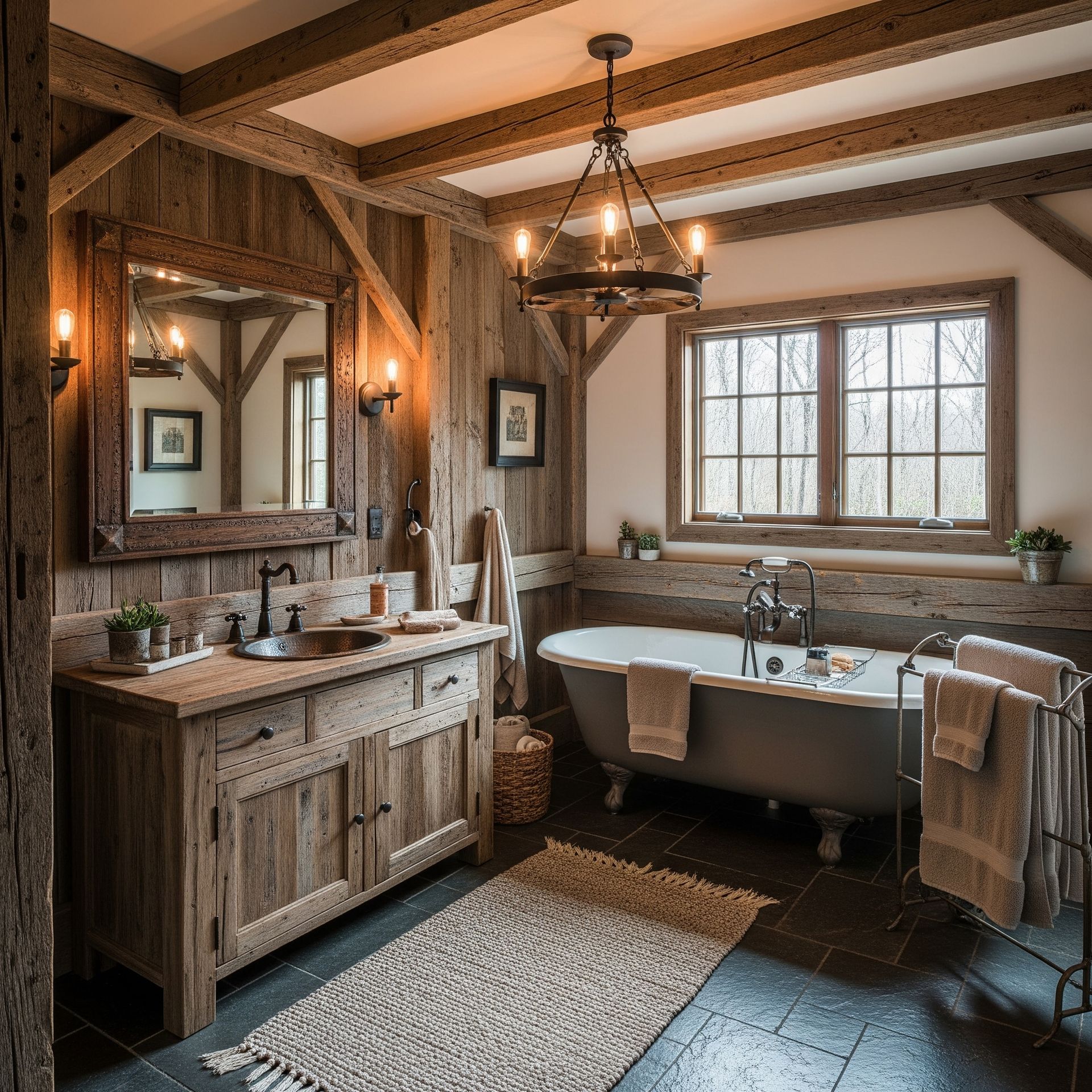Cost of Commercial Renovations: How to Plan Your Budget and Avoid Surprises
Commercial renovation projects need careful financial planning to ensure success without breaking the bank. Whether you're updating office spaces, retail locations, or industrial facilities, understanding the true costs involved and developing a comprehensive commercial renovation budgeting strategy can make the difference between a smooth project and a financial nightmare. The complexity of commercial spaces, with their unique mechanical systems and compliance requirements, demands a more sophisticated approach than residential renovations.
From material costs and labor expenses to permits and unexpected structural issues, numerous factors influence your final budget. Smart business owners who invest time in thorough renovation project planning save thousands of dollars and avoid costly delays that can disrupt operations. Professional project management becomes essential when coordinating multiple trades and ensuring minimal business interruption during construction phases.
Key Takeaways
- Commercial renovation costs typically range from $20 to $200 per square foot, depending on project scope and complexity
- Adding a 20-30% contingency buffer to your budget helps manage unexpected expenses during construction
- Getting multiple general contractor estimates provides better cost accuracy and competitive pricing
- Permit costs and compliance requirements can add 5-15% to your total project budget
- Phased renovation approaches allow better cash flow management for large commercial projects
- Professional project management reduces delays and cost overruns by maintaining timelines and quality standards
Understanding Commercial Renovation Costs
Commercial renovation projects involve multiple cost categories that work together to determine your total investment. Understanding these components helps create more accurate budgets and prevents surprise expenses that derail your timeline. Unlike residential projects, commercial renovations must account for business continuity, regulatory compliance, and specialized systems that serve larger occupant loads.
Primary Cost Components
Labor costs typically represent 40-60% of most commercial renovation budgets, varying significantly based on project complexity and local market conditions. Skilled trades like electricians, plumbers, and HVAC technicians command higher rates but ensure code compliance and safety standards. Material expenses fluctuate with market conditions, with commercial-grade products often costing more than residential equivalents due to durability requirements.
Design and architectural fees usually account for 10-15% of total project costs, providing essential services that prevent costly changes during construction. Technology infrastructure represents an increasingly significant portion of budgets as modern businesses rely heavily on network cabling, security systems, and telecommunications equipment that require careful coordination with construction activities.
Hidden Costs That Impact Budgets
Permit fees and inspection costs often surprise business owners during renovation project planning, with some jurisdictions charging thousands for complex commercial projects. Building departments charge various fees for plan reviews, permits, and required inspections throughout the construction process. Fire department reviews and health department approvals can add weeks to timelines and substantial costs to budgets.
Temporary relocation expenses during renovation can strain budgets when businesses need an alternative workspace to maintain operations. Consider costs for temporary offices, equipment moves, storage solutions, and potential revenue loss during construction phases. Utility modifications frequently exceed initial estimates when older buildings require system upgrades to meet current codes.
Environmental remediation costs arise when renovation uncovers asbestos, lead paint, or other hazardous materials common in older commercial buildings. Professional abatement services require specialized contractors and can significantly impact project timelines and budgets. Pre-renovation environmental assessments help identify these issues early in the planning process.
Cost Estimation Strategies
Accurate cost estimation forms the foundation of successful commercial renovation budgeting, requiring multiple approaches to ensure comprehensive coverage of all project elements. Different estimation methods provide varying levels of accuracy and detail, with more thorough approaches delivering better budget reliability.
| Estimation Method | Accuracy Level | Best Used For |
|---|---|---|
| Square Footage Pricing | Basic estimate | Initial budget planning |
| Detailed Material Takeoffs | High accuracy | Final budget preparation |
| Multiple Contractor Bids | Market validation | Cost verification |
Square footage pricing provides quick preliminary estimates but lacks precision for complex projects. Detailed material takeoffs require more time but deliver accurate cost projections. Combining multiple general contractor estimates with professional quantity surveying creates the most reliable commercial renovation budgeting foundation.
Working with General Contractors for Accurate Estimates
Selecting the right general contractor significantly impacts both project costs and outcomes. Experienced contractors provide detailed estimates that account for local labor rates, material availability, and regulatory requirements specific to your area. Quality contractors bring valuable expertise in commercial renovation budgeting, helping identify potential issues early and suggesting cost-effective solutions.
Evaluating Contractor Proposals
Quality general contractor estimates break down costs by category rather than providing single lump sums, allowing you to understand exactly where your money goes. Look for detailed line items covering materials, labor, permits, and project management fees with clear specifications for each component. This transparency helps identify potential cost variations between contractors and reveals different approaches to project execution.
Request references from recent commercial projects similar to yours in scope and budget range, then follow up with phone calls to verify contractor performance. Verify contractors carry proper licensing, insurance, and bonding appropriate for your project size. These credentials protect your investment and ensure professional standards throughout construction.
Negotiating Contract Terms
Fixed-price contracts provide budget certainty but may include higher markups to cover contractor risk from unexpected conditions. Time and materials contracts offer more flexibility for scope modifications but require careful monitoring to prevent cost overruns during renovation project planning phases. Consider hybrid approaches that fix major components while allowing flexibility for minor modifications.
Include clear change order procedures in contracts to manage scope modifications professionally. Establish approval processes for additional work and pricing methods for unforeseen conditions discovered during construction. Well-defined change order processes prevent disputes and maintain positive contractor relationships throughout project completion.
Budget Planning Best Practices
Successful commercial renovation budgeting requires systematic planning that accounts for both predictable costs and potential surprises. Professional project managers use proven strategies to maintain financial control while ensuring quality results that meet business objectives. Effective budget management balances cost control with flexibility to address unexpected conditions.
Creating Realistic Contingency Funds
Industry professionals recommend contingency funds between 20-30% for commercial renovations, with higher percentages for older buildings or complex systems. These reserves cover unexpected structural issues, code compliance upgrades, and material price fluctuations during construction. Larger contingencies provide peace of mind but tie up capital that could be used for additional improvements.
Allocate contingency funds by project phase rather than keeping one large reserve, allowing better tracking of risk exposure throughout construction. Early phases typically require smaller contingencies, while rough-in work and system installations need larger buffers due to potential complications behind walls.
Phasing Large Projects
Breaking large renovations into phases improves cash flow management and reduces business disruption while allowing lessons learned from early phases to improve later work. Complete priority areas first to maintain operations while construction continues in other zones. Phase planning should account for logical construction sequences and utility connections between areas.
Consider seasonal factors when scheduling phases, as weather conditions affect certain types of work and material delivery schedules. HVAC installations work best during moderate weather, while exterior work requires favorable conditions. Interior work can proceed year-round but may face material delivery challenges during severe weather periods.
Cost-Effective Renovation Strategies
Smart commercial renovation approaches balance quality improvements with budget constraints while maximizing the value delivered by every dollar invested. Strategic decisions about materials, timing, and scope help achieve professional results without overspending. Successful cost-effective remodel projects focus on improvements that deliver the greatest impact per dollar while maintaining long-term durability.
Material Selection and Timing
Purchasing materials during off-peak seasons often yields significant savings on flooring, fixtures, and mechanical equipment while providing access to better selection. Schedule material-intensive phases during manufacturer promotion periods or end-of-year inventory clearances. Building relationships with suppliers can provide access to exclusive pricing and priority delivery schedules.
Focus renovation investments on high-impact areas that improve functionality and appearance while delivering the greatest return on investment. Updated lighting, modern flooring, and fresh paint deliver substantial visual improvements at relatively modest costs. Strategic improvements to entryways and common areas create positive first impressions for customers and employees.
Value Engineering Opportunities
Alternative materials and construction methods can reduce costs without compromising quality when properly selected by experienced contractors. Laminate flooring provides an attractive wood appearance at a fraction of hardwood costs while maintaining commercial durability standards. Engineered stone countertops offer premium aesthetics at a lower cost than natural stone options.
Coordinate with utility providers for rebates on energy-efficient equipment installations. LED lighting upgrades, high-efficiency HVAC systems, and improved insulation often qualify for utility incentives that offset initial investment costs. Some programs provide immediate rebates at purchase, improving project cash flow while reducing long-term operating costs.
Common Budget Pitfalls to Avoid
Understanding typical budget mistakes helps prevent cost overruns that plague many commercial renovation projects. Learning from common oversights protects your investment and maintains project momentum through completion. Experienced project managers recognize these patterns and implement safeguards to prevent budget disasters.
Underestimating Permit and Compliance Costs
Building permit fees vary significantly by location and project scope, with some jurisdictions charging thousands for commercial renovations. Factor in costs for architectural drawings, engineering stamps, and multiple inspection fees throughout construction. Plan review fees can add substantial costs when projects require multiple submissions or modifications.
ADA compliance upgrades often trigger additional requirements during renovation projects that extend beyond original scope expectations. Bathroom modifications, doorway widening, and accessibility improvements can substantially increase project scope. Environmental impact assessments may be required for certain renovations, particularly in older buildings where contamination issues exist.
Scope Creep and Change Orders
Uncontrolled project scope expansion destroys carefully planned budgets through accumulated change orders that seem minor individually but create major cost overruns collectively. Establish clear decision-making processes and approval authorities before construction begins. Document all decisions in writing to prevent misunderstandings and disputes.
Owner-driven changes typically cost more than original work due to scheduling disruptions and material ordering complications. Make design decisions early and resist modifications once construction begins to maintain budget control. Hidden condition discoveries often generate legitimate change orders when renovation uncovers unexpected structural or mechanical issues.
Frequently Asked Questions
How much should I budget per square foot for commercial renovation?
Commercial renovation costs typically range from $20-200 per square foot depending on project complexity and finish quality. Basic cosmetic updates cost $20-50 per square foot, while complete gut renovations with high-end finishes reach $150-200 per square foot.
What percentage should I add for contingency in my renovation budget?
Industry standards recommend 20-30% contingency for commercial renovations, with higher percentages for older buildings or complex systems. This buffer covers unexpected structural issues, code compliance requirements, and material price fluctuations during construction.
How many contractor estimates should I obtain for accurate pricing?
Request detailed estimates from at least three qualified general contractors to ensure competitive pricing and comprehensive scope coverage. Multiple bids help identify pricing outliers and provide leverage during contract negotiations.
When should I consider phasing my commercial renovation project?
Phased renovations work best for large projects exceeding $100,000 or when business operations cannot accommodate full closure. This approach improves cash flow management and reduces operational disruption during extended construction timelines.
What hidden costs commonly surprise business owners during renovations?
Permit fees, temporary workspace costs, and utility system upgrades frequently exceed initial estimates. Additional expenses include code compliance modifications, environmental remediation, and extended timeline costs when unexpected issues arise during construction.
Final Thoughts
Successful commercial renovation budgeting requires thorough planning, realistic cost estimates, and professional guidance throughout the construction process. By understanding true project costs, working with qualified contractors, and maintaining appropriate contingency funds, business owners can complete renovations that enhance their facilities without financial stress. The key lies in balancing immediate needs with long-term value while maintaining operational continuity.
The investment in proper renovation project planning pays dividends through smoother construction, fewer surprises, and better long-term results. Take time to develop comprehensive budgets that account for all project phases, seasonal considerations, and potential complications. When executed thoughtfully with experienced professionals, your commercial renovation will deliver the functional improvements your business needs within planned financial parameters while positioning your facility for future growth and success.
Ready to create a realistic renovation budget? Get your free detailed cost estimate and avoid costly surprises with professional project planning that keeps your commercial renovation on track.
Reference:
https://www.energystar.gov/saveathome/heating-cooling/hvac-quality-installation



